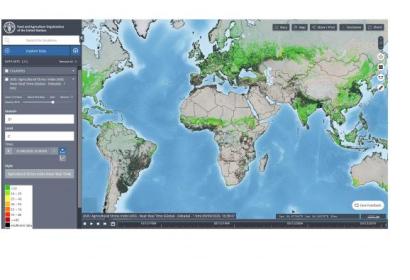The Food and Agriculture Organization of the United Nations (FAO) has launched a geospatial data platform that aims to help build stronger food and agriculture sectors post COVID-19. The Hand-in-Hand system provides access to a wide range of data on food, agriculture, socioeconomics and natural resources.
The platform features over one million geospatial layers and thousands of statistics series related to food security, crops, soil, land, water, climate, fisheries, livestock, forestry and more. It also includes information on COVID-19's impact on food and agriculture. A video describing the tool and its use cases is available online.
The data included in the system has been sourced from FAO and other leading public data providers across the UN and NGOs, academia, private sector and space agencies. It also incorporates FAOSTAT data on food and agriculture for FAO's 194 member countries plus 51 territories, from 1961 to the most recent year available.
With regards to natural hazards, the platform allows users to visualize layers from, among others, the Agriculture Stress Index System (ASIS) - a quick-look indicator that facilitates the early identification of cropped land with a high likelihood of water stress (drought). It also includes data from the FAO Desert Locust Information Service.
Amongst its many uses, the platform provides vital information to:
monitor agricultural water productivity, including agricultural systems at risk due to human pressure on land and water
compare human population density to distribution of cattle or compare density between two livestock species around the world
ascertain aquatic species distribution
analyse precipitation trends
analyse information from national forest monitoring systems that show distribution of forest resources with other geospatial data such as the road network
FAO intends to add new datasets and country- and domain-specific case studies to the platform to improve targeting and tailoring of policy interventions, innovation, finance and investment, and institutional reform in food and agriculture.
The platform is part of FAO's Hand-in-Hand initiative, an evidence-based, country-led and country-owned initiative aimed at accelerating agricultural transformation and sustainable rural development to eradicate poverty (SDG1) and end hunger and all forms of malnutrition (SDG2).

